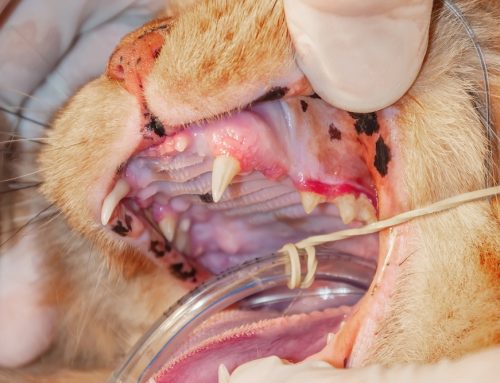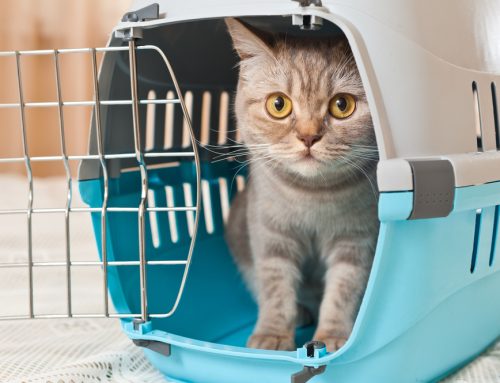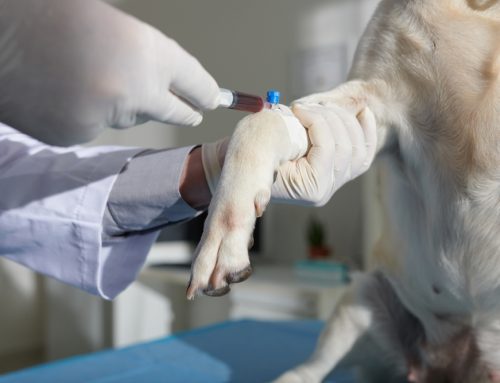Cats and dogs can experience a multitude of ocular issues that, left untreated, can cause significant pain and potential blindness. We explain some of the most common eye conditions, so you know what to keep an eye out for in your furry pal.
#1: Conjunctivitis in pets
Conjunctivitis (i.e., pink eye) is a prevalent eye condition in pets that manifests as redness and inflammation of the conjunctiva, the thin membrane covering the eye and inner eyelids. Pets with conjunctivitis may have eye discharge, squint, and frequently paw at the affected eye.
Conjunctivitis can be caused by various factors, including bacterial or viral infections, allergies, irritants, or underlying health issues. Prompt veterinary attention is essential to determine the underlying cause and prescribe appropriate treatment, which often involves antibiotic or antiviral eye drops or ointments. Additionally, keeping the affected eye clean and free from irritants can aid in healing.
#2: Corneal ulcers in pets
Corneal ulcers in pets are a common and potentially serious eye condition characterized by loss of the corneal epithelium, the outermost corneal layer. These ulcers can result from trauma, foreign objects, infections, or underlying eye diseases. Pets with corneal ulcers may display excessive tearing, squinting, redness, and light sensitivity.
Left untreated, corneal ulcers can lead to pain, inflammation, and vision loss. Veterinary evaluation is crucial for accurate diagnosis and proper management, which may include topical medications, such as antibiotic or anti-inflammatory drops, to promote healing and prevent infection. In severe cases or those involving deeper corneal layers, surgical intervention may be necessary. Timely veterinary care is essential to ensure the best possible outcome for pets with corneal ulcers.
#3: Cherry eye in pets
Cherry eye is a common ailment in pets, particularly in certain breeds such as bulldogs, beagles, and cocker spaniels. The tear gland, which is located in the third eyelid (i.e., the nictitating membrane) protrudes from the corner of the eye and resembles a small reddish mass. This condition is typically painless but can cause irritation, redness, and discharge.
The exact cause of cherry eye remains uncertain but is believed to result from weakened connective tissue or genetic predisposition. Treatment often involves surgical repositioning or removal of the affected gland to prevent further irritation and restore normal ocular function. Prompt veterinary intervention is essential to address cherry eye and prevent potential complications such as dry eye disease.
#4: Dry eye disease in pets
Dry eye disease (i.e., keratoconjunctivitis sicca [KCS]) is a common ocular condition seen in pets, particularly dogs. KCS is caused by insufficient tear production or poor tear quality and leads to dryness, inflammation, and ocular discomfort. Pets with dry eye may exhibit signs such as excessive blinking, squinting, redness, thick ocular discharge, and corneal ulcers.
Dry eye causes include autoimmune diseases, congenital abnormalities, medications, or damaged tear glands. Treatment typically involves lifelong management with artificial tear supplements, medicated eye drops to stimulate tear production, and addressing underlying causes where possible. Without proper intervention, dry eye in pets can result in corneal damage, vision impairment, and chronic discomfort.
#5: Cataracts in pets
Cataracts are a common pet eye condition, particularly in older dogs, but also in cats. Cataracts are characterized by the clouding or opacity of the eye lens, leading to impaired vision or blindness if left untreated. Pets with cataracts may have cloudy or bluish eyes, find seeing in low light conditions difficult, or bump into objects.
While aging is a primary cause of pets’ cataracts, other factors such as genetics, diabetes, trauma, or exposure to certain medications, can also contribute to their development. Treatment involves surgical removal of the affected lens, especially if vision impairment or secondary conditions develop.
#6: Glaucoma in pets
Glaucoma is a serious eye condition in pets that results in increased pressure in the eye, causing pain and eventually potential blindness. Pets with glaucoma may show signs that include redness, cloudiness, excessive tearing, dilated pupils, and squinting.
Glaucoma can be primary, meaning the condition develops on its own, or secondary, resulting from other ocular diseases or trauma. Primary glaucoma is often hereditary in certain breeds, such as cocker spaniels and basset hounds. Treatment aims to reduce intraocular pressure and preserve vision and typically involves medications or surgery to improve fluid drainage from the eye.
#7: Entropion in pets

Entropion is a common eyelid abnormality where the eyelid rolls inward, causing the eyelashes or fur to rub against the pet’s eye surface. This condition can cause irritation, redness, corneal ulcers, and potential vision impairment if left untreated. Pets with entropion may exhibit signs such as squinting, excessive tearing, pawing at the affected eye, and reluctance to open the eye fully.
Entropion can be congenital or acquired because of factors such as breed predisposition, trauma, or chronic eye inflammation. Treatment typically involves surgery to reposition the eyelid and prevent further irritation to the cornea.
Eye issues can rapidly worsen without treatment, so closely monitor your furry pal’s eyes for early signs of problems. If you spot an eye problem in your pet, schedule an appointment with our Palisades Veterinary Hospital team as soon as possible.








Leave A Comment